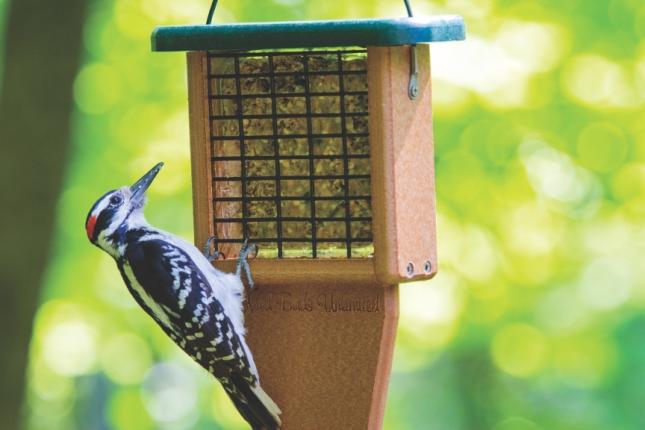
Suet Season
Backyard feeder birds normally obtain only about 20% of their daily calories from bird food offered in feeders; while the rest comes from natural food sources. In contrast, during periods of severe cold weather, your birds may use your feeders to load up on many of their calories as a means of survival.
Offering suet at your backyard feeding station is a great way to attract a variety of insect-eating birds, especially woodpeckers, chickadees, and nuthatches. Suet provides high energy and protein when nuts and insects are more difficult to find. Birds that eat suet will still find natural food sources such as insects, insect eggs and grubs to get a well-rounded diet.
What is suet? Suet is any type of animal fat. Before rendered suet was readily available, those who wanted to feed suet were forced to use scraps from the butcher shop which contained impurities and spoiled fast, limiting its use to freezing weather only. If rendered properly, suet won’t melt until the temperature is greater than 95 degrees. Suet is also a no waste food, meaning the birds gobble it all up without a trace left behind.
Most suet feeders incorporate some sort of cage made with vinyl-coated wire. Some are simple in function and design, while some have tail props for woodpeckers. Place suet feeders in a location that is convenient for birds, not too far from the protective shelter of trees and shrubs. Suet feeders provide a burst of calories to help keep their little bodies warm and make you feel all warm inside. Happy Birdfeeding!
(Kathy and her husband, John, own and operate the Wild Birds Unlimited, located at 111 S. 24th Street. Billings and at www.wbu.com/billings).

